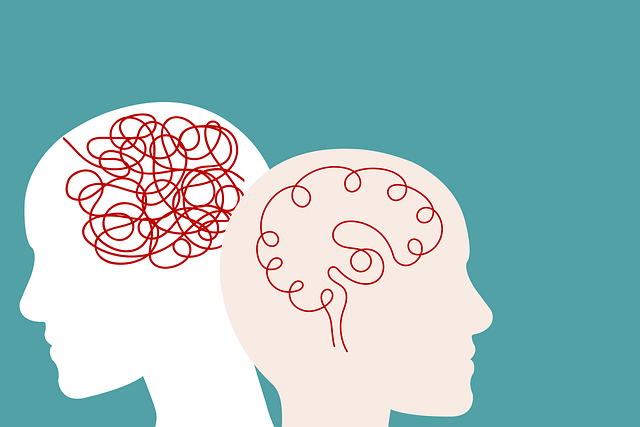Mental wellness journaling is a powerful therapy for young children with Autism Spectrum Disorder (ASD), providing a safe space for emotional expression and self-discovery. Structured exercises enhance self-awareness, emotional regulation, and coping skills, while risk assessment ensures age-appropriateness. A dedicated journaling corner with relaxing elements promotes emotional well-being tailored to young minds. Creative activities like art and writing make journaling enjoyable, fostering self-reflection and perspective. Establishing a consistent practice supports mental wellness, strengthens caregiver-child bonds, and teaches healthy coping mechanisms for ASD challenges.
Mental wellness journaling offers a powerful therapy for young children with Autism Spectrum Disorder (ASD), fostering self-expression and emotional well-being. This article guides parents and caregivers through the process, from understanding its benefits in expressive writing for young minds to creating a safe, inviting journaling corner. We provide engaging activities to spark creativity and offer strategies to encourage consistent practice, transforming journaling into a therapeutic ritual that supports children with ASD on their unique journeys.
- Understanding Mental Wellness Journaling for Children with Autism
- Benefits of Expressive Writing in Young Minds
- Creating a Safe Space: Preparing Your Journaling Corner
- Engaging Activities to Spark Creative Expression
- Supporting and Encouraging Consistent Journaling Practice
Understanding Mental Wellness Journaling for Children with Autism

Mental wellness journaling can be a powerful tool to support young children on the autism spectrum disorder (ASD) in navigating their emotions and experiences. For children with ASD, social interactions and communication can sometimes present unique challenges, making it beneficial to explore alternative methods of expression. Journaling offers a safe and private space for them to articulate their thoughts, feelings, and sensory perceptions.
Through structured journaling exercises tailored to their needs, therapy for young children with ASD can enhance self-awareness and emotional regulation skills. A risk assessment for mental health professionals is essential to ensure the content remains age-appropriate and non-threatening. By incorporating this practice into a child’s routine, they can develop a healthy self-care routine, fostering better mental health outcomes. Moreover, mental health education programs designed with these exercises can equip both children and caregivers with valuable coping mechanisms, ultimately improving overall well-being.
Benefits of Expressive Writing in Young Minds

Expressive writing has emerged as a powerful tool for promoting mental wellness in young minds, especially among children with autism spectrum disorder (ASD). This simple yet profound practice allows kids to tap into their emotions and thoughts, offering a safe outlet for self-expression. Through journaling, children can learn to articulate their feelings, process challenging experiences, and develop essential coping strategies.
The benefits of expressive writing are far-reaching in terms of enhancing emotional intelligence and resilience. It encourages young individuals to reflect on their day, identify sources of stress or joy, and gain a deeper understanding of themselves. This introspectiveness fosters self-awareness and promotes effective conflict resolution techniques, which are crucial for navigating social interactions. Moreover, engaging in regular expressive writing can contribute to the development of strong mind-over-matter principles, empowering children to overcome obstacles and cultivate a positive mindset.
Creating a Safe Space: Preparing Your Journaling Corner

Creating a Safe Space: Preparing Your Journaling Corner
For children with Autism Spectrum Disorder (ASD), engaging in mental wellness practices like journaling can be transformative. A dedicated journaling corner, carefully designed to feel safe and comforting, serves as a sanctuary for self-expression and emotional exploration. This space should be free from distractions, offering a quiet environment where the child feels empowered to open up about their thoughts and feelings. Incorporate elements that promote relaxation, such as soft lighting, cozy cushions, or favorite toys, creating an atmosphere conducive to both therapy and resilience building.
By establishing this safe haven, parents and caregivers can facilitate emotional well-being promotion techniques tailored for young minds. The journal itself becomes a tool for enhancing mental wellness, allowing children to visually track their emotions, set goals, and document progress. Through guided journaling exercises, they learn valuable coping mechanisms, improve communication skills, and develop a stronger sense of self—all essential components in navigating the unique challenges associated with ASD.
Engaging Activities to Spark Creative Expression

Engaging activities that spark creative expression can be a powerful tool for mental wellness journaling exercise guidance, especially tailored for young children with Autism Spectrum Disorder (ASD). These activities encourage self-reflection and emotional awareness, helping to develop essential coping skills. Through art, writing, or play, children can communicate their feelings, process experiences, and gain new perspectives. For instance, drawing a picture of a happy place can be a form of sensory therapy, offering a safe space to escape and relieve stress. Similarly, journaling prompts that invite storytelling allow kids to externalize their thoughts, fostering creativity while subtly promoting depression prevention strategies.
Incorporating these creative outlets into mental wellness journaling exercise guidance routines can make the process more enjoyable and accessible for young minds. By encouraging them to explore their emotions through artful expression, children with ASD build valuable coping mechanisms that support their overall coping skills development. This approach not only enhances their ability to navigate challenging situations but also fosters a deeper connection between mind and body, contributing to improved mental wellness.
Supporting and Encouraging Consistent Journaling Practice

Establishing a consistent journaling practice can be a powerful tool for supporting mental wellness, especially for young individuals navigating challenges like Autism Spectrum Disorder (ASD). Encouraging this habit at an early age can foster self-awareness and provide a safe space for expression. Parents and caregivers can play a pivotal role in making this process enjoyable and accessible. Start by normalizing the act of journaling, framing it as a creative outlet rather than a chore. Incorporate activities that align with individual interests, such as drawing or using stickers, to make the experience engaging.
Consider tailoring communication strategies from Stress Management Workshops Organization to facilitate the journaling process. Simple prompts like describing feelings or highlighting daily successes can be adapted for different developmental stages. The key is to make it a regular and welcomed routine. By integrating stress reduction methods through journaling, children with ASD can learn healthy coping mechanisms while improving their ability to communicate emotions. This practice not only enhances mental wellness but also strengthens the bond between caregivers and children.
Mental wellness journaling offers a powerful therapeutic tool for young children with Autism Spectrum Disorder (ASD), fostering self-expression and emotional regulation. By creating a safe space and engaging in creative activities, parents and caregivers can encourage consistent journaling practice. The benefits of expressive writing include improving communication skills, enhancing cognitive development, and promoting better mental health outcomes. Incorporating this simple yet effective method into daily routines can significantly support the overall well-being of children with ASD.











